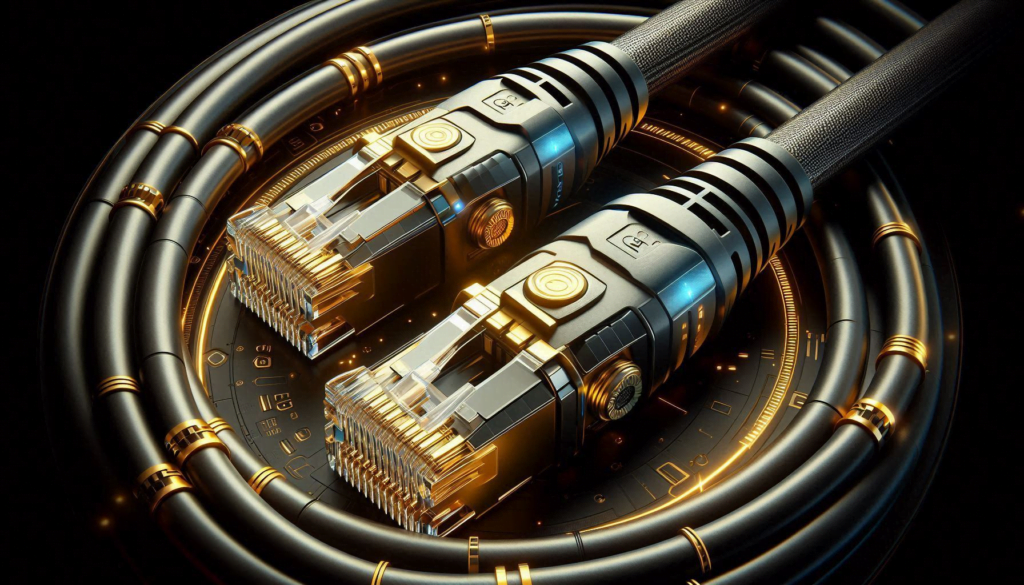Technology Moment, In the fast-paced world of financial technology, automated teller machines (ATMs) have stood the test of time as a cornerstone of modern banking. Since their inception, ATMs have evolved from simple cash dispensers to multifaceted banking hubs, offering a range of services that streamline financial transactions. The convenience and accessibility provided by ATMs have made them an integral part of our daily lives, allowing people to access their money anytime, anywhere.
As the world embraces digital solutions, the ATM business continues to thrive and adapt, integrating new technologies to meet the ever-changing needs of consumers. From biometric authentication to contactless transactions, ATMs are constantly innovating to enhance user experience and security. This blend of traditional banking convenience with cutting-edge technology makes the ATM business a fascinating and lucrative venture.
Whether you’re an aspiring entrepreneur looking to invest in a stable and profitable industry or a business owner seeking to enhance customer service, understanding the dynamics of the ATM business is crucial. In this blog post, we’ll delve into the essentials of starting and running a successful ATM business, exploring everything from business models and market research to location strategies and security measures. Join us as we uncover the secrets to tapping into this evergreen industry and making your mark in the world of financial technology.
What is an ATM Business?
An ATM (Automated Teller Machine) business involves owning, operating, and managing ATMs in various locations. As an ATM business owner, you are responsible for placing ATMs in strategic spots where they will be frequently used, ensuring they are always stocked with cash, and maintaining their functionality. The primary goal is to provide convenient cash access to customers, while earning revenue from transaction fees.
Why Start an ATM Business?
Starting an ATM business can be a lucrative and relatively passive source of income. Here are some reasons why it might be an appealing venture:
- Low Overhead Costs: Once the initial investment in purchasing and installing ATMs is made, the ongoing costs are relatively low. Maintenance and cash replenishment are the primary recurring expenses.
- Scalability: The ATM business model is easily scalable. As you start generating profits from one machine, you can reinvest in additional ATMs to expand your network and increase your income.
- Passive Income: After the initial setup and regular maintenance, ATMs can generate passive income with minimal day-to-day involvement. This makes it an attractive option for those seeking a business that doesn’t require constant attention.
- High Demand: Despite the rise of digital payments, cash remains a widely used form of currency. ATMs provide a convenient way for people to access cash, especially in areas with limited banking facilities.
- Flexibility: As an ATM business owner, you have the flexibility to choose your working hours and the locations where you place your machines. This allows you to tailor the business to fit your lifestyle and preferences.
Table of Contents
The ATM Business Model
How Does the ATM Business Make Money?
The ATM business primarily generates revenue through transaction fees. Every time a customer uses an ATM that is not part of their bank’s network, they are charged a fee. Here’s a breakdown of the primary ways an ATM business makes money:
- Surcharge Fees: When a non-bank customer uses your ATM, you can charge a convenience fee, known as a surcharge. This fee typically ranges from $2 to $5 per transaction and is a significant source of income.
- Interchange Fees: Banks and card networks pay the ATM owner a small fee for every transaction their customers make at the ATM. This fee is lower than the surcharge but adds up over time, especially in high-traffic locations.
- Other Fees: Some ATMs offer additional services like bill payment, mobile phone top-ups, or even cryptocurrency transactions, which can generate extra revenue.
Types of ATM Business Models
The ATM business can operate under several different models, each with its own advantages and challenges. Here are the most common ones:
- ATM Placement Agreement:
- Overview: In this model, the ATM owner places the machine at a location free of charge and shares the transaction fees with the location owner.
- Advantages: It’s low-risk for the location owner, encouraging them to allow the ATM placement. The ATM owner benefits from high foot traffic locations without paying rent.
- Challenges: Profit sharing can reduce the overall income for the ATM owner.
- ATM Ownership:
- Overview: Here, the business owner owns the ATM outright and receives all the transaction fees. The location owner might receive a small rental fee or a portion of the transaction fees.
- Advantages: Higher potential profits as there is no need to split the transaction fees significantly.
- Challenges: Higher initial investment and responsibility for maintenance and cash management.
- Leased ATMs:
- Overview: The ATM owner leases the machine to a business or location. The lessee manages the ATM and keeps a portion of the transaction fees.
- Advantages: Generates a steady income through leasing fees with less responsibility for daily operations.
- Challenges: Dependence on the lessee for proper machine maintenance and cash management.
- White Label ATMs:
- Overview: These are ATMs that are operated by non-bank entities. They don’t carry the branding of any bank and are often found in convenience stores, malls, and other high-traffic areas.
- Advantages: Flexibility in branding and potential partnerships with various businesses.
- Challenges: Often require a strong network and reliable cash management processes.
Key Factors to Consider in the ATM Business Model
- Location: The profitability of an ATM largely depends on its location. High-traffic areas like shopping malls, gas stations, and tourist spots tend to generate more transactions.
- Transaction Volume: Higher transaction volumes lead to higher revenue. It’s crucial to place ATMs in locations where they will be frequently used.
- Maintenance and Uptime: Ensuring that ATMs are always operational is vital.
- Compliance and Security: Adhering to legal requirements and ensuring robust security measures are in place is crucial for smooth operations and customer trust.
Market Research and Feasibility
Understanding the feasibility of an ATM business is crucial before diving into the setup process. Market research helps you evaluate whether the business can be profitable and sustainable in your chosen area. Here’s a detailed breakdown of this step:
Understanding the Market Demand
1. Identifying Target Customers:
- Determine who will use the ATM. Is it in a high-traffic area like a shopping mall, gas station, or convenience store? Are there businesses around that pay employees in cash, or are there events and activities that attract large crowds?
- Consider the demographics of the area. Younger people might be more inclined to use digital payments, while older generations may prefer cash transactions.
2. Cash Usage Trends:
- Study local cash usage trends. While cashless transactions are rising, many still prefer using cash for daily expenses. Analyze trends in your target area to ensure sufficient demand for cash withdrawals.
3. Local Economic Conditions:
- Assess the economic conditions of the area. Higher economic activity usually translates to more transactions and higher ATM usage. Look for areas with stable or growing economic activity to maximize your chances of success.
Competitor Analysis
1. Identifying Competitors:
- List existing ATMs in the vicinity. Visit these locations to understand their business model, customer flow, and peak hours. Use this information to find gaps in the market that your ATM could fill.
2. Analyzing Competitor Strategies:
- Study the strengths and weaknesses of your competitors. Are they offering competitive transaction fees? What kind of customer service and maintenance do they provide? What are their security measures like?
- Learn from their strategies and think about how you can differentiate your business. Maybe you can offer lower fees, better customer service, or more advanced security features.
3. Evaluating Competitor Performance:
- Observe how busy their ATMs are. A high-usage competitor indicates strong demand but also high competition. Low-usage ATMs could mean low demand or poor management.
- Use this data to decide whether the market is saturated or if there is room for another player.
Feasibility Analysis
1. Cost-Benefit Analysis:
- Calculate the costs involved in setting up and running your ATM business, including the purchase of machines, installation, maintenance, cash handling, and security.
- Estimate the revenue based on expected transaction volume, surcharge fees, and any other income streams like advertising on the ATM screen.
2. Break-even Analysis:
- Determine the break-even point by comparing your costs to your projected revenues.
3. SWOT Analysis:
- Conduct a SWOT (Strengths, Weaknesses, Opportunities, Threats) analysis. Identify your strengths, such as a prime location or superior customer service, and weaknesses, like high initial costs or limited technical expertise.
- Look for opportunities, such as underserved areas or partnerships with local businesses, and be aware of threats, such as potential regulatory changes or emerging payment technologies.
Regulatory and Compliance Considerations
1. Understanding Legal Requirements:
- Research local regulations and compliance requirements for operating ATMs. This might include getting permits, adhering to banking laws, and ensuring your machines meet safety and security standards.
2. Anti-Money Laundering (AML) – (KYC) Regulations:
- Ensure your business complies with AML and KYC regulations to prevent illegal activities. This involves maintaining accurate records of transactions and customer identification.
3. Staying Updated:
- Regularly update your knowledge of industry regulations and compliance standards to avoid legal issues and maintain a trustworthy business operation.
Choosing the Right Location for Your ATM Business
Choosing the right location for your ATM is critical to the success of your ATM business. The location you select can significantly influence the amount of traffic your machine receives, which directly impacts your profitability.

Importance of Location in ATM Business
Location is paramount in the ATM business for several reasons:
- Foot Traffic: High foot traffic areas are ideal because they maximize the visibility and usage of your ATM. Locations with a steady flow of people, such as shopping centers, convenience stores, and transportation hubs, tend to attract more users.
- Convenience: People prefer using ATMs that are easily accessible and convenient. Locations that are easy to reach and located in areas where people already need to withdraw cash are more likely to be successful.
- Security: The safety of the location is also crucial. ATMs placed in well-lit, secure areas are more likely to be used by customers, especially during nighttime.
Best Locations for Placing ATMs
- Retail Stores: Convenience stores, supermarkets, and malls are excellent locations for ATMs. These places have high foot traffic and are frequented by people who often need cash for purchases.
- Restaurants and Bars: These locations can be very profitable, especially in areas where cash payments are common or if the establishment does not accept credit cards.
- Transportation Hubs: Airports, train stations, and bus terminals are high-traffic areas where people often need cash quickly.
- Entertainment Venues: Concert halls, cinemas, and amusement parks are also great spots since visitors might need cash for tickets, concessions, and other expenses.
- Hotels and Motels: Travelers often need cash, making these places ideal for ATMs. Ensure the ATM is in a visible and easily accessible spot in the lobby.
- Gas Stations: These locations are convenient for travelers and locals alike, offering easy access to cash while fueling up.
- Educational Institutions: Universities and colleges are good options since students often need cash for various expenses.
- Corporate Buildings: Office complexes with a significant number of employees can generate consistent ATM traffic, especially during lunch breaks and after work hours.
- Hospitals and Clinics: Visitors and staff at these facilities frequently need cash, making them good candidates for ATM placement.
Factors to Consider When Choosing a Location
- Demographics: Understand the demographics of the area. Young professionals, students, and tourists are groups that often rely on cash transactions.
- Competition: Analyze the competition. Too many ATMs in one area can saturate the market, reducing your ATM’s usage.
- Lease Agreements: Ensure that the terms are clear regarding maintenance, security, and revenue sharing.
- Accessibility: Ensure the location is accessible 24/7 if possible. Limited access can significantly reduce the machine’s profitability.
- Visibility: The ATM should be placed in a spot that is highly visible to attract users. Signage can also help in directing potential users to the machine.
- Safety and Security: Choose locations with good lighting and security measures to ensure users feel safe. This can include CCTV cameras and regular security patrols.
Types of ATMs
Understanding the different types of ATMs is crucial for anyone looking to enter the ATM business. The choice of ATM can significantly affect your business model, costs, and revenue potential. Let’s dive into the two main distinctions in ATM types: on-site vs. off-site ATMs and cash dispensers vs. full-service ATMs.
On-site ATMs vs. Off-site ATMs
On-site ATMs:
On-site ATMs are located within or very close to a bank branch. They are part of the bank’s infrastructure and are typically maintained and monitored by the bank staff. These ATMs often offer more services and higher security because they are within the bank’s premises.
Pros:
- Enhanced security due to bank presence.
- Direct support and maintenance from the bank.
- Usually offer more comprehensive services, including deposits and withdrawals.
Cons:
- Higher competition from other bank ATMs.
- Less flexibility in choosing high-traffic locations outside the bank’s control.
Off-site ATMs:
Off-site ATMs are located away from bank branches, in locations like shopping malls, airports, convenience stores, and other high-traffic areas. These ATMs are managed by third-party operators or the banks themselves to provide convenient access to cash for customers on the go.
Pros:
- Flexibility in choosing locations with high foot traffic.
- Potentially higher transaction volumes due to convenience.
- Opportunities for branding and partnerships with local businesses.
Cons:
- Higher security risks due to remote locations.
- Increased maintenance and operational responsibilities.
- Potential for higher rental costs for prime locations.
Cash Dispensers vs. Full-Service ATMs
Cash Dispensers:
Cash dispensers, also known as basic ATMs, are the most straightforward type of ATMs. Their primary function is to dispense cash to customers. These ATMs are ideal for locations where customers mainly need quick access to cash.
Pros:
- Lower cost of purchase and installation.
- Simpler maintenance and fewer technical issues.
- Suitable for high-traffic areas where speed is essential.
Cons:
- Limited functionality (no deposits or other banking services).
- May require frequent restocking of cash.
Full-Service ATMs:
Full-service ATMs offer a wider range of banking services beyond just dispensing cash. These machines allow users to perform various transactions such as cash deposits, balance inquiries, fund transfers, and bill payments. They are more complex and typically used in bank branches or locations where customers expect comprehensive services.
Pros:
- Provides a broader range of services to customers.
- Can reduce the need for in-branch transactions, saving time for customers and banks.
- Enhances customer satisfaction by offering more functionality.
Cons:
- Higher cost of purchase, installation, and maintenance.
- More complex to operate and may require more frequent technical support.
- Can be slower for customers who only need to withdraw cash.
Choosing the Right Type for Your Business
The choice between on-site and off-site ATMs and between cash dispensers and full-service ATMs depends on various factors including your budget, target market, and business goals.
- Budget: If you have a limited budget, starting with cash dispensers might be a better option. They are less expensive to purchase and maintain.
- Location: For high-traffic non-bank locations, off-site cash dispensers can be very effective. In contrast, full-service ATMs are more suitable for locations where comprehensive banking services are in demand.
- Market Needs: Understand the needs of your target market. If the area has limited banking facilities, a full-service ATM could fill a significant gap. In contrast, if the area is densely populated with bank branches, a cash dispenser in a high-traffic retail area could be more beneficial.
Setting Up Your ATM Business
Setting up an ATM business involves several crucial steps, each of which is essential for ensuring your business runs smoothly and profitably.
1. Conduct Market Research: Before diving into the ATM business, it’s essential to understand the market. Research the demand for ATMs in your target area. Look into the number of existing ATMs, their locations, and the volume of foot traffic they receive. This information will help you identify underserved areas and potential locations for your ATMs.
2. Create a Business Plan: A comprehensive business plan is your roadmap to success.
3. Choose Your Business Structure: Decide on the legal structure of your business. Each structure has its own legal and tax implications, so it’s wise to consult with a business attorney or accountant to make the best choice for your situation.
4. Register Your Business: Once you’ve chosen your business structure, register your business with the appropriate government authorities. This step may involve obtaining a business license, registering a business name, and securing any necessary permits.
5. Secure Funding: Starting an ATM business requires capital for purchasing ATMs, transaction processing, installation, and maintenance. Explore various funding options, including personal savings, bank loans, investor funding, or small business grants. Having a solid business plan can greatly assist in securing the necessary funds.
6. Choose the Right ATM Provider: Select a reliable ATM provider to supply your machines. Look for providers that offer high-quality ATMs, competitive pricing, and excellent customer service. Consider both new and refurbished machines, and evaluate the features each model offers to ensure they meet your business needs.
7. Negotiate Contracts with Venues: Identify potential locations for your ATMs and negotiate placement contracts with the venue owners. Ideal locations include high-traffic areas such as shopping malls, convenience stores, gas stations, and entertainment venues. Ensure the contract terms are favorable and clearly outline the responsibilities of both parties.
8. Purchase and Install ATMs: Once you have your locations secured and ATMs selected, proceed with purchasing and installing the machines. Installation may involve setting up the physical ATM, configuring software, and connecting to a transaction processing network. Ensure each ATM is easily accessible and visible to attract users.
9. Set Up a Transaction Processing Network: Partner with a transaction processing network to handle ATM transactions. This network will facilitate the electronic transfer of funds between the ATM, the cardholder’s bank, and your bank. Choose a network that offers reliable service, competitive fees, and robust security measures.
10. Implement Security Measures: Security is paramount in the ATM business. Install security features such as surveillance cameras, alarm systems, and anti-skimming devices to protect your ATMs from theft and fraud. Regularly update software and conduct security audits to ensure your machines remain secure.
11. Develop a Maintenance Plan: ATMs require regular maintenance to ensure they function correctly and minimize downtime. Establish a maintenance plan that includes routine checks, cash replenishment, and prompt repairs for any issues that arise. Partner with a reliable maintenance service provider or train your staff to handle basic maintenance tasks.
12. Market Your ATM Business: Promote your ATM business to attract users and increase transaction volume. Utilize online and offline marketing strategies such as social media, local advertising, and partnerships with nearby businesses. Highlight the convenience and accessibility of your ATMs to draw more customers.
13. Monitor and Optimize Performance: Regularly monitor the performance of your ATMs using transaction data and customer feedback. Analyze which locations are most profitable and identify any underperforming machines. Use this information to optimize your network by relocating or replacing less effective ATMs.
14. Stay Compliant with Regulations: Stay updated with industry regulations and compliance requirements to avoid legal issues. This includes adhering to the Americans with Disabilities Act (ADA) for ATM accessibility, PCI DSS standards for transaction security, and local financial regulations.
15. Scale Your Business: As your ATM business grows, consider expanding your network by adding more machines in new locations. Use your performance data and market research to identify promising areas for expansion. Scaling your business can increase revenue and enhance your market presence.
Cost Considerations for Starting an ATM Business
Initial Investment and Ongoing Costs
Starting an ATM business requires a thoughtful approach to budgeting and financial planning. Here, we will break down the key cost considerations you should keep in mind to ensure your venture is profitable and sustainable.
Initial Investment
- ATM Purchase or Lease
- Purchasing an ATM: The cost of a new ATM machine ranges from $2,000 to $10,000, depending on the features and capabilities. Advanced models with full-service options and enhanced security features tend to be on the higher end.
- Leasing an ATM: Leasing can be an attractive option for those who prefer lower upfront costs. Leasing fees typically range from $50 to $200 per month, but this can add up over time.
- Installation Costs
- Physical Installation: Installing an ATM machine involves various expenses such as labor, electrical work, and networking setup. Expect to spend between $500 and $2,000 for installation, depending on the complexity.
- Site Preparation: Some locations might require additional modifications, such as constructing a secure enclosure or reinforcing the floor, which can add to the initial costs.
- Licensing and Permits
- Business Licenses: Obtaining the necessary business licenses and permits is essential and can vary by region.
- Compliance Fees: You may also need to comply with local, state, or federal regulations, which could involve additional fees.
Ongoing Costs
- ATM Maintenance and Repairs
- Regular Maintenance: To ensure your ATM functions smoothly, regular maintenance is required. This includes software updates, hardware checks, and cleaning, which can cost around $100 to $300 per visit.
- Repairs: Unexpected repairs can be costly, with fees ranging from $200 to $1,000 depending on the issue. Having a maintenance contract can help mitigate these expenses.
- Cash Management
- Cash Loading: If you handle cash loading yourself, you need to account for the time and transportation costs. Alternatively, you can hire a cash management service, which typically charges $50 to $100 per visit.
- Cash Insurance: Insuring the cash within the ATM against theft or loss is a prudent measure, costing around $500 to $1,000 annually.
- Telecommunications and Networking
- Internet Connectivity: Your ATM will need a reliable internet connection for transaction processing. Monthly fees for a dedicated line or cellular service can range from $20 to $50.
- Software Updates and Monitoring: Ongoing software updates and monitoring services to ensure security and efficiency may add another $10 to $30 per month.
- Transaction Processing Fees
- Interchange Fees: Every transaction processed through your ATM incurs a fee from the card networks. These interchange fees typically range from $0.15 to $0.25 per transaction.
- Processing Fees: In addition to interchange fees, you’ll pay a small processing fee to your ATM processor, usually around $0.10 to $0.15 per transaction.
- Location Fees
- Rent or Commission: If your ATM is placed in a high-traffic location such as a store or mall, you may need to pay rent or a commission on each transaction to the property owner. This can range from a flat monthly fee of $100 to $500 or a percentage of the surcharge revenue (typically 20-30%).
Cost-Saving Tips for ATM Businesses
- Negotiate with Suppliers and Providers
- Seek competitive quotes from multiple ATM suppliers and service providers. Negotiate better rates for purchasing, leasing, maintenance, and transaction processing fees.
- Choose Cost-Effective Locations
- Opt for locations that offer lower rent or commission fees but still have adequate foot traffic to ensure profitability. Sometimes smaller, less prominent locations can be more cost-effective while still generating sufficient revenue.
- Regular Maintenance to Prevent Costly Repairs
- Regularly scheduled maintenance can prevent more expensive repairs down the line. Ensure that your ATMs are serviced consistently to avoid unexpected breakdowns.
- Leverage Tax Deductions
- Take advantage of tax deductions for business expenses related to your ATM operations, including depreciation on equipment, maintenance costs, and business-related travel expenses.
- Efficient Cash Management
- Optimize your cash loading schedule to minimize the frequency of cash refills and reduce transportation costs. Use cash forecasting tools to better predict and manage cash needs.
ATM Providers and Suppliers
When starting an ATM business, one of the crucial decisions you will make is choosing the right ATM providers and suppliers. This choice can significantly impact the efficiency, reliability, and profitability of your operation. Let’s break down what you need to know about ATM providers and suppliers.
Understanding ATM Providers
ATM providers are companies that offer a range of ATM machines and related services. They can either manufacture the ATMs themselves or act as distributors for other manufacturers. Choosing the right provider is essential because it affects everything from the quality of the machines to the level of customer support you receive.
Types of ATM Providers
- Direct Manufacturers: These are companies that design and produce their ATMs. Examples include major brands like NCR, Diebold, and Hyosung. Purchasing directly from manufacturers often ensures better pricing and direct support.
- Distributors: These companies buy ATMs from manufacturers and resell them to businesses. They often offer a wider range of brands and models, allowing for more flexibility and options.
- Service Providers: In addition to supplying ATMs, these companies offer comprehensive services such as installation, maintenance, transaction processing, and technical support.
Choosing the Right Provider
When selecting an ATM provider, consider the following factors:
- Reputation and Reliability: Research the provider’s reputation. Look for reviews and testimonials from other ATM business owners. A reliable provider should have a track record of delivering high-quality machines and excellent customer service.
- Product Range: Ensure the provider offers a variety of ATM models that fit your business needs. Whether you need basic cash dispensers or full-service ATMs, having options is beneficial.
- Support and Maintenance Services: Good providers offer robust support and maintenance services. This includes 24/7 technical support, regular maintenance schedules, and prompt response to any issues that arise.
- Pricing and Contracts: Compare pricing between different providers. Be mindful of the total cost, including the purchase price, installation fees, maintenance charges, and any transaction processing fees. Review the contract terms carefully to avoid hidden fees or unfavorable conditions.
Negotiating with Suppliers
Negotiating with ATM suppliers is an important step to ensure you get the best deal. Here are some tips to help you:
- Do Your Homework: Research the average costs and services provided by various suppliers. This knowledge gives you a solid foundation for negotiation.
- Bulk Purchasing: If you plan to purchase multiple ATMs, use this as leverage to negotiate a better price. Suppliers are often willing to offer discounts for bulk orders.
- Service Packages: Negotiate for comprehensive service packages that include installation, maintenance, and technical support.
- Flexible Terms: Aim for flexible contract terms that allow you to upgrade machines or switch providers if needed. Avoid long-term contracts that lock you into unfavorable conditions.
- Value-Added Services: Ask for additional value-added services such as training for your staff, marketing support, or software updates. These extras can enhance the efficiency and profitability of your ATM business.
ATM Installation and Maintenance
Installing and maintaining ATMs is crucial to the success of an ATM business. This process involves several steps and ongoing responsibilities to ensure that the machines operate smoothly and securely.
1. Installation Process Overview
A. Site Assessment : Before installation, a thorough site assessment is necessary. This includes evaluating the location for accessibility, visibility, and security. The site should have sufficient space for the ATM and be easily accessible to customers. It should also comply with local regulations regarding the placement of ATMs.
B. Selecting the Right ATM : Choose an ATM model that fits the location and your business needs. Consider factors such as the expected transaction volume, the type of transactions (cash dispensing, check deposits, etc.), and any special features required by your customers.
C. Preparing the Site : Prepare the site by ensuring that the floor is strong enough to support the ATM and that there is adequate electrical wiring and network connectivity. The installation site must meet specific requirements, including power supply, internet or phone line connections, and a secure environment.
D. Professional Installation :Hire a professional technician or an ATM installation service to set up the machine. Proper installation involves connecting the ATM to the power supply, network, and any additional security features like cameras or alarms. The technician will also calibrate the machine to ensure it operates correctly.
E. Testing and Configuration : Once installed, the ATM must be thoroughly tested to ensure all functions are working correctly. This includes checking cash dispensing, receipt printing, and connectivity with the banking network. Any issues identified during testing should be addressed before the ATM goes live.
2. Maintenance and Troubleshooting
A. Regular Maintenance
Routine maintenance is essential to keep the ATM in good working condition and prevent issues that could affect its performance. Regular tasks include:
- Cash Replenishment: Regularly monitor and refill the ATM with cash to ensure it remains stocked. This often involves tracking transaction volumes and scheduling refills accordingly.
- Cleaning: Keep the ATM clean, both inside and out. This involves cleaning the screen, keypad, and card reader, as well as ensuring the interior is free of dust and debris.
- Software Updates: Update the ATM software regularly to ensure it remains secure and compatible with the latest banking standards.
B. Security Checks
Regularly inspect the ATM for any signs of tampering or security breaches. This includes checking the integrity of the machine, the security of the surrounding area, and any surveillance systems in place.
C. Troubleshooting Common Issues
ATMs can encounter various issues, such as:
- Jamming: Paper jams in the receipt printer or cash dispenser are common. Regular maintenance can prevent these problems, but if they occur, they need to be addressed promptly to avoid disrupting service.
- Connectivity Problems: Issues with network connectivity can prevent the ATM from processing transactions. Ensure that internet or phone line connections are stable and secure.
- Hardware Failures: Components like card readers, keypads, or cash dispensers can fail. Regular checks and prompt repairs are necessary to minimize downtime.
D. Service Contracts and Support
Consider signing a service contract with an ATM provider or maintenance company. These contracts often include regular maintenance, emergency repairs, and technical support, which can be beneficial for ensuring continuous operation.
E. Documentation and Compliance
Keep detailed records of all maintenance activities, repairs, and updates. This documentation is important for compliance with regulatory requirements and for tracking the performance and issues of the ATM.
Security Measures in ATM Business
In the ATM business, ensuring the security of your machines is crucial for protecting your investment, maintaining customer trust, and complying with regulatory standards. Here’s a detailed look at the security measures you should implement to safeguard your ATMs:
1. Physical Security 🙂
ATM Placement: Choose secure locations for your ATMs. High-traffic areas with good lighting and security features, such as surveillance cameras, are ideal. Avoid placing ATMs in secluded or poorly lit areas.
Physical Protection: Install sturdy, tamper-proof enclosures around your ATMs. Consider reinforced steel or heavy-duty materials that make it difficult for potential thieves to break into the machine.
Locks and Safes: Use high-quality locks and safes for storing cash and other sensitive components. The cash compartments should be securely locked and resistant to forced entry.
Alarm Systems: Integrate alarm systems with your ATMs. These systems can alert you immediately if there is any tampering or unauthorized access.
2. Cybersecurity 🙂
Encryption: Ensure that all transactions and communications between the ATM and your network are encrypted. This helps protect sensitive customer data from being intercepted or stolen.
Regular Updates: Keep your ATM software and firmware up to date.
Secure Connections: Use secure and private connections for your ATMs. Avoid public or unsecured networks that could be susceptible to cyberattacks.
Fraud Detection Systems: Implement fraud detection systems that monitor for unusual or suspicious activity. These systems can help identify and mitigate potential threats before they become serious issues.
3. Surveillance and Monitoring 🙂
Cameras: Install high-resolution security cameras around your ATMs. Ensure they cover both the ATM itself and the surrounding area.
Remote Monitoring: Utilize remote monitoring systems to keep an eye on your ATMs in real-time. Many modern ATM systems offer remote access features that allow you to check the status and security of your machines from anywhere.
Regular Inspections: Conduct regular physical and electronic inspections of your ATMs. Look for signs of tampering or other security issues and address them promptly.
4. Employee Training 🙂
Staff Awareness: Train your staff to recognize and respond to potential security threats. This includes understanding the importance of securing cash, recognizing suspicious behavior, and following proper procedures for handling security issues.
Emergency Protocols: Establish and communicate clear emergency protocols for staff to follow in case of a security breach or attempted theft. This should include who to contact, how to secure the site, and how to report incidents.
5. Customer Awareness 🙂
Safe Usage Tips: Provide clear instructions for customers on how to use the ATM safely. This can include tips on covering their PIN when entering it, being aware of their surroundings, and reporting any suspicious activity to the bank or ATM provider.
Warning Signs: Display warning signs on or near the ATM advising customers of potential security risks and what to do if they suspect tampering or fraud.
Marketing Your ATM Business
Marketing your ATM business is crucial for ensuring your ATMs are placed in high-traffic locations and that they are utilized to their full potential. Here’s a detailed guide on how to effectively market your ATM business:

1. Understanding Your Target Audience
Your primary customers are both consumers who use ATMs and businesses where you place your machines. Here’s how to segment them:
- Consumers: These are individuals who use ATMs to withdraw cash. Understanding their needs and preferences, such as location convenience and transaction fees, helps in positioning your ATMs effectively.
- Businesses: These are locations like retail stores, gas stations, or malls where you’ll place your ATMs. They can be targeted based on foot traffic, location accessibility, and the potential revenue they can generate from ATM fees.
2. Building Relationships with Business Owners
One of the most effective ways to secure prime ATM locations is by building strong relationships with business owners. Here’s how:
- Offer Value: Demonstrate how having an ATM can benefit their business by increasing foot traffic and offering a share of the transaction fees.
- Negotiate Terms: Be transparent about the terms and benefits, and be willing to negotiate a mutually beneficial agreement.
- Follow-Up: Maintain a positive relationship by regularly checking in and addressing any issues that arise with the ATM.
3. Leveraging Local Advertising
Local advertising helps increase visibility and attract potential users to your ATMs. Consider the following:
- Flyers and Posters: Place them in strategic locations around the area where your ATMs are installed, such as community centers, local shops, and bulletin boards.
- Local Newspapers and Magazines: Advertise in local publications to reach residents and businesses in the vicinity.
- Community Events: Sponsor or participate in local events to increase brand awareness and engage with the community.
4. Digital Marketing Strategies
In the digital age, online presence is crucial. Here’s how to use digital marketing to promote your ATM business:
- Website: Create a professional website that showcases your services, provides information about your ATMs, and includes contact details for potential business partners.
- Search Engine Optimization (SEO): Optimize your website for search engines to attract organic traffic. Use relevant keywords related to ATMs and local search terms.
- Social Media: Use platforms like Facebook, Twitter, and LinkedIn to engage with your audience, share updates, and promote special offers or new locations.
5. Offering Promotions and Incentives
Promotions and incentives can attract both business owners and consumers:
- For Business Owners: Offer initial placement discounts or a revenue-sharing model to incentivize businesses to host your ATMs.
- For Consumers: Consider offering cash back or discounts on fees for the first few transactions to encourage usage.
6. Networking and Partnerships
Building a network within the financial and retail industries can be advantageous:
- Industry Conferences and Trade Shows: Attend relevant events to connect with other professionals and potential business partners.
- Partnerships with Financial Institutions: Collaborate with banks or financial institutions for better ATM placements and service offerings.
7. Monitoring and Adjusting Your Marketing Efforts
- Track Performance: Use metrics such as transaction volume and customer feedback to gauge the success of your marketing efforts.
- Adjust Strategies: Based on performance data, tweak your marketing strategies to better meet your goals and improve results.
8. Customer Service and Support
Excellent customer service can enhance your reputation and attract more business:
- Provide Support: Offer responsive customer support to address any issues with the ATMs.
- Gather Feedback: Collect feedback from both business owners and users to continuously improve your service.
Revenue Streams for an ATM Business
When venturing into the ATM business, understanding the various revenue streams is crucial to managing and optimizing your profits. Here’s a comprehensive look at how money flows into an ATM business:
1. Transaction Fees
- Overview: The primary source of revenue for ATM operators is the transaction fee charged to users. This fee is added to the amount the user withdraws from their account.
- How It Works: When a customer uses an ATM to withdraw cash, they are usually charged a fee by the ATM owner. This fee can vary depending on the location, competition, and other factors.
- Revenue Potential: The more transactions processed, the higher the revenue. High-traffic locations such as shopping centers, airports, and busy streets typically generate more transactions.
2. Surcharge Fees
- Overview: Surcharge fees are the additional charges imposed on users who use an ATM outside of their own bank’s network. This fee is typically absorbed by the ATM operator.
- How It Works: When a customer from another bank uses your ATM, they pay a surcharge fee on top of their transaction amount. This fee is collected by the ATM owner and is a significant part of the revenue stream.
- Revenue Potential: Surcharge fees are often set by the ATM owner and can range from $1 to $5 per transaction, depending on the location and market.
3. Interchange Fees
- Overview: Interchange fees are paid by the card-issuing bank to the ATM owner for each transaction conducted at the ATM. This fee is set by card networks like Visa and MasterCard.
- How It Works: When a customer uses their debit or credit card at your ATM, the card-issuing bank pays an interchange fee to the ATM owner. This fee compensates the ATM operator for providing the service.
- Revenue Potential: Interchange fees are generally lower than transaction or surcharge fees but can still contribute significantly to overall revenue, especially with a high volume of transactions.
4. Advertising and Sponsorship
- Overview: ATMs can be used as advertising platforms to generate additional revenue. This can involve displaying ads or promotional content on the ATM screen or physical space.
- How It Works: By partnering with businesses or brands, ATM owners can sell advertising space on the ATM screens or the ATM itself. Advertisers pay for this space, adding to the revenue.
- Revenue Potential: The revenue from advertising depends on the location’s foot traffic and the attractiveness of the advertising space. High-visibility locations can command higher advertising rates.
5. Service Fees and Maintenance Contracts
- Overview: Some ATM operators offer additional services such as maintenance and cash replenishment under service contracts. These contracts can provide a steady revenue stream.
- How It Works: In cases where the ATM is part of a larger network or is managed by a third party, operators might charge service fees for regular maintenance, cash handling, and technical support.
- Revenue Potential: Service contracts provide predictable and recurring revenue, helping stabilize income and cover operational costs.
6. Merchant Partnerships
- Overview: Establishing partnerships with local businesses or merchants can create additional revenue streams. Businesses might pay a fee to have an ATM installed on their premises.
- How It Works: Merchants benefit from having an ATM on-site, which can drive foot traffic and potentially increase their sales. In return, the ATM owner receives a fee or a percentage of the transaction revenue.
- Revenue Potential: These partnerships can be lucrative, especially if the location is frequented by a large number of people.
Managing Cash Flow
1. Understanding Cash Flow in the ATM Business
Cash flow management is crucial in the ATM business because it directly impacts profitability and operational efficiency. In simple terms, cash flow refers to the movement of money into and out of your ATM business. Properly managing cash flow ensures that you have enough funds to cover expenses, maintain ATMs, and reinvest in your business.
2. Initial Cash Requirements
When starting an ATM business, you need an initial cash reserve for several purposes:
- ATM Purchase or Lease: The cost of acquiring or leasing ATMs can be substantial. This investment varies depending on whether you buy or lease the machines and the type of ATMs you choose.
- Cash Inventory: You’ll need a starting amount of cash to load into each ATM. The amount can vary based on the expected transaction volume and the machine’s cash capacity.
3. Regular Cash Replenishment
One of the ongoing responsibilities in the ATM business is ensuring that each machine is adequately stocked with cash:
- Transaction Volume: High-traffic locations will require more frequent cash replenishment to prevent the ATMs from running out of money. Monitor transaction patterns to determine the optimal frequency for refilling.
- Cash Flow Forecasting: Estimate your cash needs based on historical transaction data and predict future cash requirements. This forecasting helps in planning cash replenishment schedules and avoiding cash shortages.
4. Managing Cash Reserves
Effective cash flow management involves maintaining a balance between having sufficient cash reserves and optimizing the use of available funds:
- Reserve Fund: Maintain a reserve fund to cover unexpected expenses, such as machine repairs or sudden increases in cash demand. This reserve acts as a financial cushion, ensuring smooth operations.
- Cash Utilization: Optimize the use of cash by avoiding overstocking ATMs. Excess cash in machines can lead to inefficiencies and increased risk of theft or fraud.
5. Handling Cash Withdrawals and Deposits
Efficient management of cash withdrawals and deposits is vital for maintaining liquidity:
- Cash Handling Procedures: Establish secure procedures for handling cash withdrawals and deposits to prevent losses and ensure accurate accounting.
- Bank Relationships: Develop a good relationship with your bank to facilitate smooth cash deposits and withdrawals. Some banks may offer services tailored to ATM businesses, such as cash management solutions or bulk deposit services.
6. Tracking and Reporting
Keep accurate records of cash flow to monitor the financial health of your ATM business:
- Cash Flow Statements: Regularly prepare cash flow statements to track cash inflows and outflows. This documentation helps in assessing profitability and identifying areas for improvement.
- Financial Software: Utilize financial management software to streamline cash flow tracking, generate reports, and analyze financial data. Automation tools can simplify record-keeping and reduce errors.
7. Addressing Cash Flow Challenges
Be prepared to address common cash flow challenges that may arise in the ATM business:
- Unexpected Expenses: Plan for unexpected expenses, such as emergency repairs or legal fees, by maintaining an emergency fund and adjusting your budget as needed.
- Seasonal Variations: Account for seasonal variations in transaction volume that may impact cash flow. For example, tourist destinations may experience higher ATM usage during peak seasons.
8. Reinvesting in Your Business
Effective cash flow management enables you to reinvest in your ATM business:
- Expansion Opportunities: Use surplus cash to explore opportunities for expanding your ATM network, acquiring new locations, or upgrading your machines.
- Improvement Initiatives: Allocate funds for marketing efforts, technological upgrades, or staff training to enhance operational efficiency and profitability.
Conclusion and Future Trends in the ATM Business
The ATM business has transformed significantly, moving from basic cash dispensers to advanced financial services kiosks. This evolution has been driven by technological advancements and changing consumer preferences. To remain competitive, ATMs now offer a variety of services, enhanced security, and integration with digital banking solutions.
Future Trends
- Increased Digital Integration:
- Future ATMs will support mobile wallet transactions, allowing users to access accounts and services through their smartphones.
- Contactless Transactions:
- With health and safety concerns on the rise, contactless options like biometric authentication and QR code payments will become standard.
- Enhanced Security Features:
- Advanced security measures, including two-factor authentication and AI-driven fraud detection, will be crucial to protect user data.
- Cryptocurrency Adoption:
- The growing popularity of cryptocurrencies will lead to more crypto ATMs, enabling transactions for digital currencies alongside traditional cash.
- Sustainability Initiatives:
- Eco-friendly practices and energy-efficient machines will become priorities as the industry aims to reduce its environmental impact.
- AI and Machine Learning:
- Implementing AI for predictive analytics will help optimize cash management and enhance user experience through personalized services.
- Expansion into Underbanked Markets:
- ATMs will focus on reaching underserved communities, providing access to essential financial services in remote areas.
- Regulatory Changes:
- Adapting to evolving regulations will be necessary to ensure compliance with security standards and consumer protections.
ATM Business FAQs
What is an ATM business?
An ATM business involves owning and operating Automated Teller Machines (ATMs) to provide cash withdrawal services to customers while generating income through transaction fees.
How do I start an ATM business?
To start an ATM business, follow these steps:
- Research the market and identify potential locations.
- Obtain necessary licenses and permits.
- Purchase or lease ATMs.
- Set up bank relationships for cash replenishment and processing.
- Develop a maintenance plan for your machines.
What are the costs involved in starting an ATM business?
Initial costs can include:
- ATM purchase or lease (typically $2,000-$10,000 each)
- Installation and setup fees
- Transaction processing fees
- Insurance
- Cash for replenishment
How do I find a good location for my ATM?
Look for high-traffic areas such as:
- Convenience stores
- Gas stations
- Shopping malls
- Bars and restaurants
- Event venues
How do I make money with an ATM?
You earn money through transaction fees charged to users. The fee amount can vary based on location and competition but typically ranges from $1 to $3 per transaction.
What are the ongoing costs of running an ATM?
Ongoing costs may include:
- Cash replenishment
- Maintenance and repairs
- Transaction processing fees
- Insurance
- Location rental agreements (if applicable)
Do I need special permits to operate an ATM?
Yes, you may need local business licenses and permits depending on your state or municipality. Check with local regulations to ensure compliance.
How do I handle ATM maintenance?
Regular maintenance includes:
- Ensuring cash availability
- Cleaning the machine
- Monitoring for technical issues
- Working with a technician for repairs
Can I operate ATMs remotely?
Yes, many ATM providers offer remote monitoring services, allowing you to track transactions, cash levels, and performance from a distance.
What are the risks associated with an ATM business?
Risks include:
- Theft or vandalism
- Technical malfunctions
- Fluctuating cash flow
- Compliance and regulatory issues
How do I choose an ATM provider?
Consider the following when choosing an ATM provider:
- Fees and contracts
- Customer service reputation
- Range of services offered
- Availability of technical support
What technology do I need for my ATMs?
Your ATMs should include:
- A reliable processor for transactions
- Encryption for data security
- Remote monitoring capabilities
- Regular software updates for security compliance
How do I promote my ATM business?
Promote your ATM business by:
- Building relationships with local businesses
- Offering competitive transaction fees
- Providing excellent customer service
- Utilizing social media and local advertising
What if my ATM is not making enough transactions?
If your ATM isn’t performing well:
- Reevaluate the location.
- Consider adjusting fees.
- Improve visibility and promotion.
- Analyze peak usage times and adjust your services accordingly.
Is financing available for purchasing ATMs?
Yes, many ATM distributors and financial institutions offer financing options for purchasing ATMs. Check with your provider for available plans.













